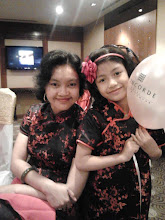Different styles of Learning... I learn new software/application by trying out. If Can't figure out how to use it on my own, I would refer to the tutorial or help file that comes along with the software/application. If I know what I want to do but not knowing how to do it and the help doesn't give much help, then I would search online, view the online tutorial, especially videos, because I learn best by observing how others do, and I get ideas on how to innovate from the method I observe once I've tried on my own.
As for learning 'theories' or dry subjects, reading is inevitable. But if I could listen (to audio) or view (videos) of presentations, lectures, etc., I learn better. Once I get the rough idea what the whole topic is about, my preference would be to discuss on the topic/subject and share ideas. Personally for me, only when I debate out I learn more, understand better and remember better. I prefer others clarify my understanding if the subject is still a blur to me.
Attwell (2006) "Learners are no longer necessarily locked in to a particular course in order to gain a qualification but are able to present their learning to prove they possess such competencies or are able to achieve those outcomes." I was so afraid of trying new things, or even inserting new skills/knowledge in my portfolio, without having certificates of the qualification after going through personal learning. Now, I know that all I need to do is "perform" or "present" (depending on the type of skill/knowledge) in order to be recognised, and to hear somebody greeted me saying, "Hi! Would you like to join our team as..." and I get the projects here and there. At least now, I'm more confident in what I know and what I've learnt, and more braver to commit and try out. Of course, I would learn more when I'm in the field, and that's the most valuable thing that I wouldn't miss.
One of the reason why I encourage students to have personal website is to prove a few things:
- It proves that they are computer literate and know a bit of technicality in publishing a website.
- Personal website should display their work and make it an online resume plus online portfolio, to show their future employer their worth and effort. Their work (e.g. for Computing) could be any application or animation they did for course assignments, they can tidy up the work according to comments made by lecturers and publish it online - preferably created in demo video on how the application works and how it looks like.
- Only with visual (even if it's only a blog on some research done) that people can understand and relate to, in order to be assured that this person has some 'value-added' criteria to consider.
... and I do that too - have my own website and e-portfolio.
Imagine if our campus is 'ubiquitous' as such, probably upon entering the lecture hall, the students would be able to get the course brief details plus recommended readings/videos/audios for case studies to be discussed available to be downloaded on the spot... to name a few. One thing for sure, students won't have any excuse not able to find the classroom because the whole campus will be 'ubiquitous' including the location map and how to get to classrooms.
At the end of the day, it's about "availability" and "infrastructure" - back to square one. Without this 'environment' to support 'personal learning', it would be a long way to achieve our vision in lifelong learning.
As I was going through the article by Attwell (2006), I had an idea regarding research on "examining the use of different social software applications for learning". Lately, I've been using 'Notes' in Facebook to broadcast my thoughts and information I get (via email, etc). I think we can make use of that as one of the tools for learning (provided all our students are in our Friends list, of course). Other features in Facebook inclusive Application (using PHP to add on for learning capability, etc.), and Group (which already include discussion board, latest news updates, links to recommended readings, etc.).
Oh, I have to list my PLE, is it? Quite a long list, though. But I'll minus the common ones like MS Office, email and all, ok?
- SNC - Facebook (more on PLE), Friendster (less on PLE)
- Blogger - multiple blogs with different topics
- Google 'suite' (i.e. mail, alert, calendar, iGoogle, etc.)
- Solidcasts/Podcast - audio files hosting
- Audacity - audio recording
- Meebo - all IM in one site
- Delicious - tagging
- Camtasia - screen capture video to create demos
- Webservers - upload HTML pages and websites
- Search engines - most of the time Google
- Online tutor guide on books - Pearson, Wiley (one of my students even did the online quiz on this site and I received the email of his marks!)
- Moyea - FLV downloader, to download Flash video files
- Adobe suite - photo editing and other design works
- Flash - preparing sample works for assignments on Multimedia course (I have to try out the tutorials/exercises before I teach/assign the students , right?)
- Moodle - I just installed on my personal website http://www.classroom.shahrinaz.com/moodle/, haven't properly set it up or test it yet
I probably have more, can't think anymore...
Reference:
Attwell (2006) Personal Learning Environments. The Wales-Wide Web website. Retrieved on 26 November 2008 from http://www.knownet.com/writing/weblogs/Graham_Attwell/entries/6521819364
Probably more.., and more..,
- Sha on Teaching and Learning
27 Nov 2008
